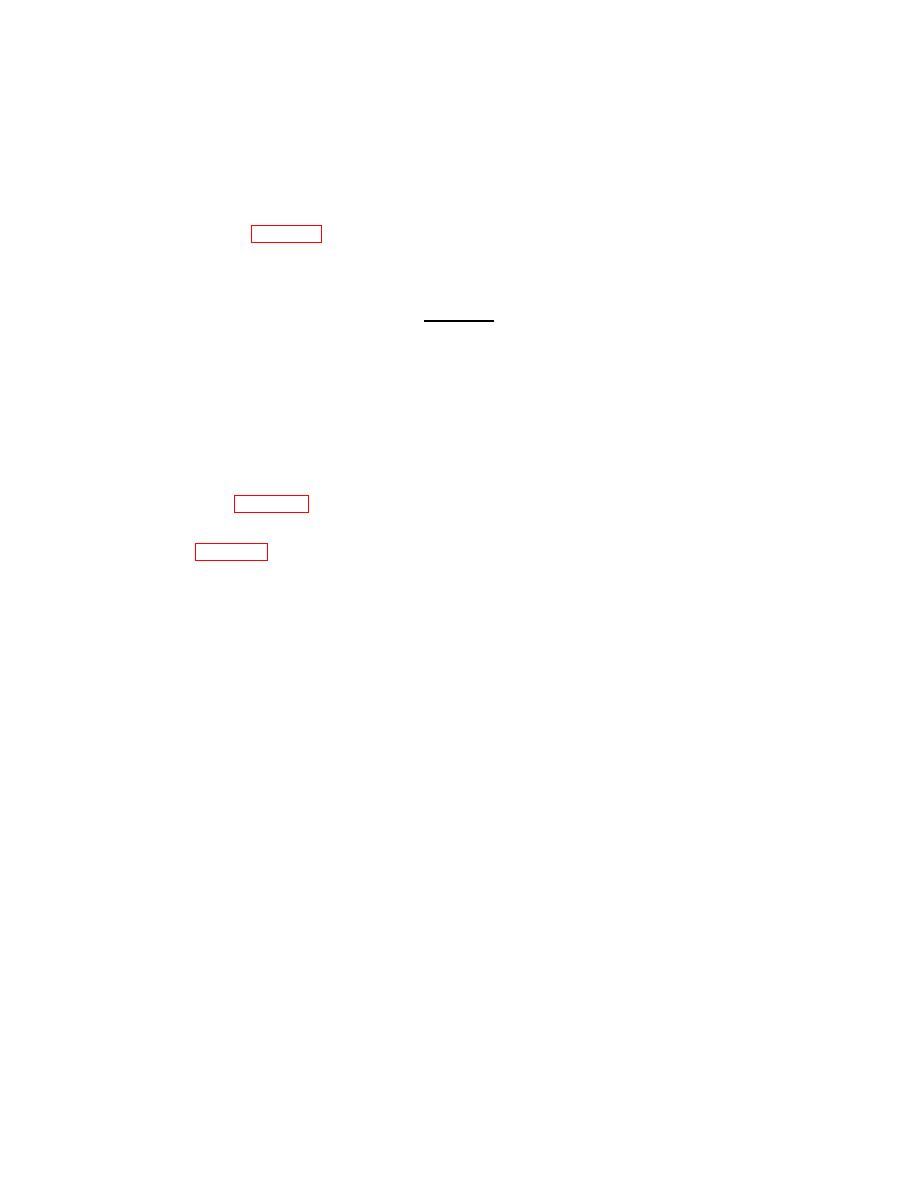 |
|||
|
|
|||
|
|
|||
| ||||||||||
|
|
 NAVAIR 17-15-50.1
TM 38-301-1
T.O. 33-1-37-1
CGTO 33-1-37-1
NOTE
The plastic sampling tubes may be received curved and difficult to straighten; but a tube
straightener can be fabricated and used for taking samples from many systems. An
example of a tube straightener constructed with 3/32-inch diameter stainless steel rod is
illustrated in figure 3-4.
(d)
Replace the filler cap on the tank and dispose of the sampling tube in accordance with local
base requirements.
CAUTION
If sampling materials are accidentally dropped into the system, do not operate the
equipment until corrective action has been completed.
(2)
Drain/Valve Sampling.
(a) Check appropriate service documentation for location of drain/valve. Equipment may have
to be in operation for valve sampling.
(b)
Open the sample bottle.
(c)
(d)
Hold the sample bottle under the drain/valve and fill to approximately 1/2 inch from the
top as pictured in figure 3-5, views B and C. Close the drain/valve outlet.
(e)
Replace the bottle cap and tighten it enough to prevent leakage from the bottle.
(3)
Pump/Syringe Sampling.
(a)
Determine the best source for obtaining the sample such as the dipstick hole or filler neck.
(b)
Determine best length for sample tubing according to the equipment.
(c)
Open the sample bottle. (Pumps are designed to attach the sample bottles to the pump
assembly.)
(d)
Use pump/syringe action to draw fluid from equipment.
(e) Deposit fluid into sampling bottle. Repeat steps (d) and (e) as necessary to fill sample bottle
to approximately 1/2 inch from the top.
(f) Replace the filler cap or dipstick and discard the sampling tube. Replace the sample bottle
cap and tighten enough to prevent leakage.
(4)
Oil Servicing Cart Sampling.
(a) Remove supply tank fill cap and visually inspect tank for contamination. If contamination is
found, refer to applicable tech orders and conduct an investigation.
(b) Ensure that the oil sample taken is representative of the oil in the cart reservoir and not the
oil in the hose. Install the nozzle adapter onto the supply hose. Insert the nozzle end into the supply tank
opening. Operate the pump handle a minimum of ten complete cycles circulating oil from the supply tank through
the supply hose. Verify that there is a steady flow of fluid to ensure that the sample will be representative of the
oil in the reservoir.
(c) Carefully pump a sufficient amount of oil into the sample bottle, filling the bottle to within
one-half inch from the top of the bottle.
3-7
|
|
Privacy Statement - Press Release - Copyright Information. - Contact Us |